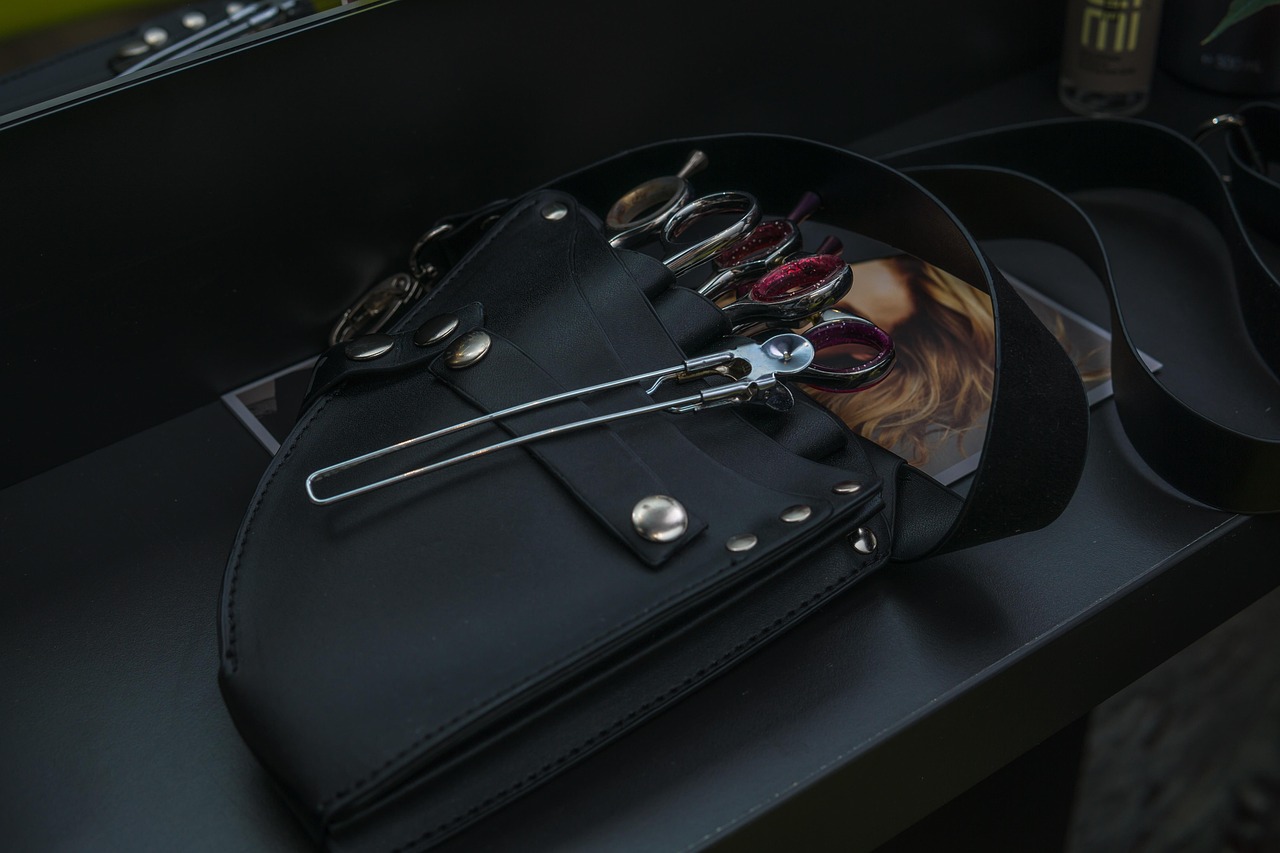Why Speed and Quality Can Coexist on Busy Shifts
Speed is a skill, not a shortcut. When we plan, prioritize, and practice, fast haircuts can be precise and polished.
This guide delivers practical, repeatable techniques stylists and barbers can use during peak windows. You’ll get station setups, cutting sequences, client consult tips, and team workflows focused on consistent results.
Expect clear steps you can implement tonight. No fluff—just reliable methods that protect your finish while trimming minutes off each service.
Read on for concise habits and tools that make every busy shift smoother and every haircut better —quickly done.




Comb Over Fade Magic ✨ Hair Transformation by a Master Barber
Prep Like a Pro: Station Setup, Tools, and Smart Shortcuts
Optimize your layout — design for reach
A purposeful layout reduces wasted seconds. Arrange your station so 90% of daily-use items live within a 12–18 inch arc. For a right‑handed cutter that usually means:
A quick real-world test: time how long it takes to reach for five common items; shave off even one second per reach and you’re saving minutes each shift.
Create a consistent, pre-set toolkit
Decide on a trusted, repeatable kit and keep it identical every shift. Examples:
Label or color-dot guards and combs so you can grab the right length without thinking. Preset combos (e.g., clipper #2 + shear over comb) cut decision time in half.
Quick-prep routines that shave seconds
Small prep actions remove friction before the client sits:
Micro-routines — repeatable moves that become reflex
60-second station reset (do this between clients):
Pre-weigh a clipper-guard progression:
Time-savers, sanitization, and compact packing
Quick tech and hygiene wins:
Packing list for mobile/cramped environments:
Next up: you’ll pair this setup with cutting sequences that actually shave minutes off the clip time while keeping finishes tidy.
Fast, Flawless Techniques: Cutting Sequences That Save Minutes
Cut in order: silhouette first, detail later
Start every cut by establishing the silhouette—get the overall shape and length right before worrying about layers or texture. That means one clean “bulk pass” to set the length, a refining pass to blend, and a final detail pass for edges and texture. A silhouette-first workflow avoids rework (and the time sink that comes with it); once the outer shape is nailed, small adjustments are quick and predictable.
Clippers for shape, shears for finish
Use clippers to remove mass and define hard lines, then switch to shears to refine and soften. Clippers are faster for bulk; shears give control for face-framing, crown work, and point-precision.
A single high‑quality shear (6–6.5″) and a pair of thinning shears will cover most finishes—fewer tools means fewer swaps and less time lost rummaging.
Two-handed speed: clipper-over-comb and scissor-over-comb
Two-handed techniques let you cut and steady at once. Practice clipper-over-comb for quick, consistent fades and scissor-over-comb for controlled bulk removal on the sides and crown. Key tips:
Fade fast: guard progression & blending landmarks
A predictable guard progression reduces guesswork: start long to short (e.g., #4 → #3 → #2 → #1), then use the lever and a final #000 touch for natural transitions. Pick 2–3 blending landmarks and stick to them:
Set these as visual checkpoints and blend between them in controlled passes. Use the clipper taper lever to micro-adjust rather than swapping guards repeatedly—this alone can save minutes per client.
Texturize smart: quick moves that add finish
Add movement without lengthy layering:
Do one targeted texturizing pass after the silhouette is set—less is more.
Minimize tool swaps & use contrast lines
Keep common tools within reach and choose multi-purpose tools (adjustable-clippers, a workhorse shear). Use contrast lines—natural partings, cowlicks, and the hairline—as immediate visual guides to avoid constant measuring. If a line looks off, check contrast against the opposite side before re-cutting.
Work in controlled passes & drill for speed
Adopt a three-pass pattern: rough bulk, refine blend, finish texture. Practice with short drills to build accuracy at speed:
Client Communication: Quick Consults and Expectation Management
Clear, short consultations prevent redo time. When you ask the right questions fast and confirm visually, you cut corrections and keep the chair moving. Below are practical tools, a 60–90 second script, and tactical language to manage expectations without sounding rushed.
The 60–90 second consult: script + focused questions
Start friendly, then move through the essentials.
Quick script (30–45 seconds):“Hi — I’m [Name]. What are we doing today? Great, two quick things so I nail it: how short do you want it, how much daily styling do you want to do, and any trouble spots I should know about? I’ll repeat back and confirm a timing — okay?”
Ask these focused questions (aim to cover in one pass):
Say it aloud and move on — clients appreciate efficiency.
Use visuals: make choices instant
Keep a compact visual library accessible:
When a client shows a photo, point to the closest match and say, “This one, but with X inches off the top?” — visual shorthand saves time and avoids misinterpretation.
Tip: show 1–2 comparison images rather than scrolling through fifty.
Confirmation steps that lock in the plan
Perform three quick confirmations before starting:
These small rituals reduce mid-cut changes and refunds.
Upsells, deferrals, and walk-ins
Offer add-ons strategically:
These presets set expectations and increase perceived value.
Resetting unrealistic expectations (without friction)
If a client wants a complicated change on a rush shift, use empathic clarity:
A quick, confident consult creates buy-in for a speed-first approach and sets the stage for smooth shifts and reliable turnover in the next section on workflows and team tactics.
Shift Workflows & Team Tactics: Scheduling, Turnover, and Consistency
Scheduling & appointment flow
Think of the day as waves, not a single tide. Stagger start times so not everyone begins and ends at once: book express cuts in 20–25 minute slots on 15-minute offsets (e.g., 9:00, 9:15, 9:30) and reserve 45–60 minute blocks for signature services on the hour. Build 5–10 minute buffers after any service longer than 30 minutes to absorb delays and reduce downstream stress.
Reserve 1–2 flexible walk-in slots per stylist or operate a “floating express” chair to capture walk-ins without derailing scheduled jobs.
Simple scheduling rules for peak windows
Create simple, enforced rules the whole team follows:
These rules keep expectations aligned and make daily rostering predictable.
Handoffs & chairside assistants
Make every second count by splitting tasks. Train assistants or junior stylists to own:
Small choreography example: stylist signals “finish” at last clip; assistant readies spray and brush, so the cut moves straight into styling.
Turnover, sanitation, and restocks
A rapid, repeatable turnover routine saves minutes and prevents chaos. Create a 60–90 second checklist posted at each station:
Keep a small “restock kit” per station (extra neck strips, clips, single-use capes, and a spare clipper guard set). For tools, reliable clippers like Wahl Professional or Andis models reduce mid-shift failures—invest where downtime hurts most.
Training, shadowing, and metrics
Turn speed into a team skill with short, focused training:
Track three key metrics:
Review metrics weekly and make small, measurable adjustments.
Self-care to sustain speed
Fast work that falls apart at hour four isn’t sustainable. Encourage:
With these operational systems and team habits, speed becomes predictable and repeatable—setting you up to carry momentum into the article’s final thoughts.
Practice, Systems, and the Confidence to Cut Faster
Practice, systems, and communication form the three pillars of fast, quality service: clean prep, reliable techniques, and clear client conversations supported by team workflows. Start small — pick one new habit each week, measure the time and satisfaction impact, and tweak the approach until it becomes second nature.
Track results, celebrate improvements, and share successful shortcuts with your team so speed becomes consistent across shifts. Speed grows with practice and repeatable systems; getting faster means happier clients, smoother shifts, and more rewarding work. Try one change this week and watch momentum build today.







Love this article — finally some tactical advice that isn’t just “be faster.” The station setup tips (that organizer tray recommendation!) actually make sense. I picked up a Large Barber Station Organizer Tray for Clippers last month and it cut my turnover time for tool swaps by like 30%.
Also thinking of getting the AT-A-GLANCE 2025–2026 planner to map shift workflows. Anyone else tried scheduling cuts by complexity like the article suggests?
I use a color-coded planner system (post-its + AT-A-GLANCE) — visually quick at a glance. Worth the tiny extra effort.
Great to hear the tray helped, Sarah! Scheduling by complexity is a big time-saver — block easier cuts back-to-back and keep one slot for walk-ins/emergencies. The planner is perfect for that kind of batching.
Yep, I do low-maintenance trims in the morning and longer styles later. Planner helped me stop double-booking. 🙂
This section on cutting sequences was gold. I started pre-sectioning while the client was still explaining their style (quick consult + hands-on) and it shaved off minutes without making anyone nervous.
Practice tip that helped me:
1) Run the sequence slowly until it’s automatic
2) Increase pace while keeping the same accuracy
3) Time yourself weekly and adjust
The 15-Piece Professional Stainless Steel Hairdressing Scissors Set is what I use for different textures — cheap enough to experiment without worrying about ruining a single pair.
Ooh, I need step 3. Timing yourself weekly sounds like a small habit with big returns. How long are your practice sessions?
Both. Mannequins for raw technique, real heads for client communication and pace adjustments. 20–30 min 3x week kept me consistent.
Do you practice on mannequins or real heads? I feel mannequins don’t react like real clients.
Love that drill — the timed practice is exactly what we recommend in ‘Practice, Systems, and the Confidence to Cut Faster.’ Glad the 15-piece set worked for you!
Practical takeaway: the AT-A-GLANCE 2025–2026 Academic Weekly Monthly Planner + a labeled organizer tray = less decision fatigue. Not flashy, but omg it works. Short and useful.
Glad you liked the pairing! Small systems are the backbone of consistent speed.
Ikea tray + AT-A-GLANCE did the trick for my tiny station. Simple beats perfect.
Solid read but I wish the client communication section had more scripts. Quick consults are an art — I sometimes get stuck with indecisive clients and then lose momentum. The 15-piece set is great for adjustments but doesn’t fix fuzzy consults.
That 3-question approach works wonders. I keep a laminated card with the questions at my station for a quick glance.
Thanks Tom — point taken. We plan to add a short scripts appendix. Meanwhile, try the ‘3-question consult’ from the article: 1) Show me reference? 2) How much maintenance? 3) Anything you hate from past cuts? That usually closes decisions fast.
Short and sweet: if your scissors suck you’ll never get faster. That Cut Factory 6.5-inch Matte Black Luxury Hair Scissors look slick, but do they hold an edge? Anyone tried them vs the ULG 6.5-inch Professional Japanese Steel Hair Scissors?
Good point — blade quality matters. The ULG Japanese steel tends to hold an edge longer and is better for high-volume shops; the Cut Factory is great for style and ergonomics but might need more frequent sharpening depending on use.
I have both. ULG = workhorse. Cut Factory = looks cool and comfy. If you’re on busy shifts, lean ULG. 👍
OMG the ULG 6.5-inch Professional Japanese Steel Hair Scissors are 🔥. I switched mid-shift once and felt like a new person lol.
The article’s tip about one-handed cleanup + tool swap saved me SO many minutes. Also, tiny typo in the ‘Prep Like a Pro’ subheading (maybe?), but overall great!
If it’s a quick resharpen test you can do it mid-shift but be cautious. Maybe try on a slow day first 😅
Thanks for the shoutout and for flagging the typo — we’ll patch that. Love that the ULG worked out for you!
Mid-shift switch? Brave. I always wait till break but might try it now.
Question — the article says ‘smart shortcuts’ but doesn’t get into sanitation workflow between clients when you’re moving fast. Does the organizer tray still work if you need to sterilize stuff between cuts? Any tips on keeping speed without cutting corners on hygiene?
Great callout, Alex. The tray is best used to keep items organized before and after sterilization. Use two small zones: clean-ready (sterilized/packaged) and in-use. Rotate tools so you never have to stop mid-shift to deep-clean. Quick spray+wipe between clients for surfaces, full sterilize at break.
Also pre-load a ‘next client’ kit on a separate tray: fresh towel, comb, cape, clips. Saves seconds and reduces cross-contam.
UV case + labeled trays = lifesaver. Clients notice when you’re organized; builds trust even when you’re fast.
I keep a small UV case for combs and clips and single-use neck strips — helps maintain speed without risking hygiene.
Totally — I label trays clean/used with stickers. Sounds anal but it works 😂
I appreciate the article but still skeptical: speed vs artistry. The ‘cutting sequences’ sound repeatable for basic fades and trims, but what about creative cuts? Can you maintain artistic detail on busy shifts?
Exactly. I batch creative cuts later in the day and keep mornings for maintenance. Works well for my shop.
Valid concern, Lucas. The idea isn’t to dumb down styles — it’s to systematize the routine parts so you can allocate focused time for the creative bits. Save creativity for scheduled slots and use faster sequences for maintenance cuts.
Haha, I had a client ask if my Matte Black scissors came with a ‘fast-forward’ button after I started using the Cut Factory 6.5-inch Matte Black Luxury Hair Scissors. 😂
On a serious note: ergonomics + weight balance in the Cut Factory saved my wrist on busy shifts. The article nails that ergonomics are part of speed — not just technique.
Love the fast-forward line — made me laugh. Ergonomics are huge, and investing in a comfortable pair pays off in consistency and fewer burnout injuries.
I really appreciated the ‘Practice, Systems, and the Confidence to Cut Faster’ section. Long-term it’s about building habits, not just hacks. A couple questions:
– Any recommended drills for improving scissor-over-comb speed?
– Do you recommend rotating between the ULG 6.5-inch and the 15-Piece set or sticking to one pair to build muscle memory?
Also, small thing — would love downloadable templates for shift scheduling (would use the planner more easily).
Great questions. Drills: 10-minute focused scissor-over-comb sets with a metronome to increase tempo gradually; practice transitions between guard lengths on mannequins. For tools: start with one primary pair (build consistency), but keep the 15-piece set for texture/detail work. We’re actually working on downloadable shift templates — stay tuned!